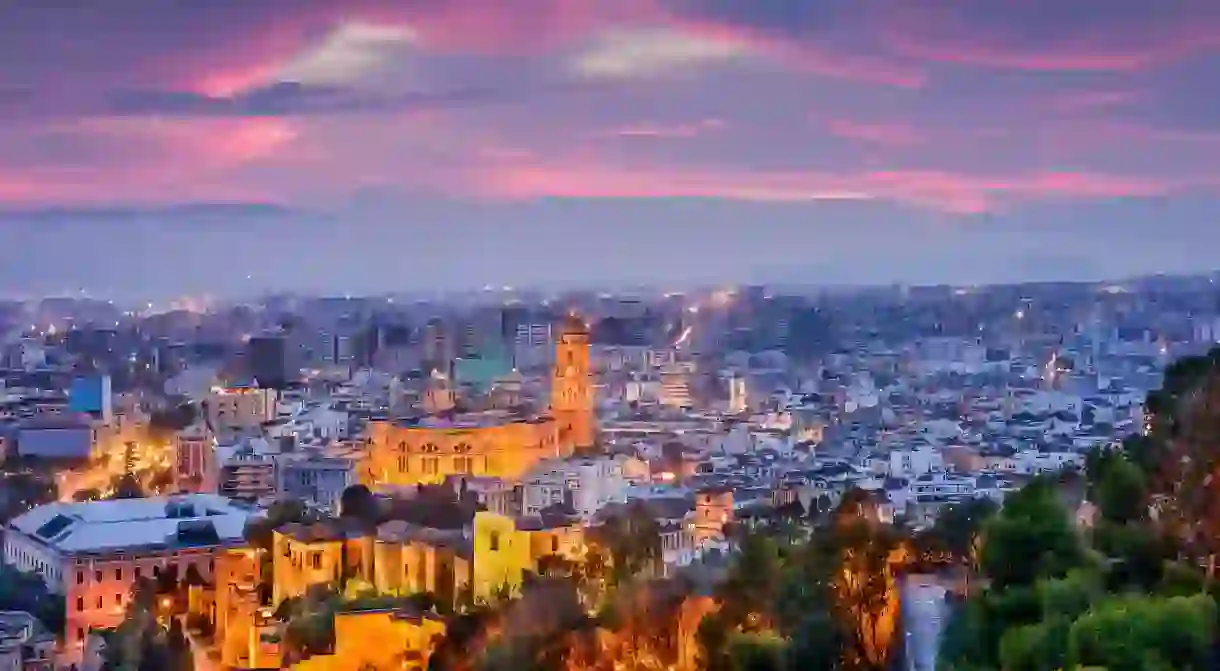Reasons Why You Should Visit Málaga, Spain

Málaga is a cultural hub that brims with art galleries, fashion boutiques and an edgy new creative quarter – all under near-constant sunshine and with golden-sand beaches within pottering distance. If that hasn’t convinced you yet, here are the top reasons you should visit this corner of Spain.
As one of the oldest cities in Europe, it should come as no surprise that Málaga is absolutely stacked with things to do and places to visit. The city that gave us Picasso continues to provide contemporary art and culture, with new galleries springing up alongside design boutiques and colourful, street-art-adorned walls. What’s more, with an average of 300 days of sunshine a year, there’s very little chance of rain ruining your plans. The only time you’re likely to get wet is when you visit one of the many beaches in the region.
Picasso was born in Málaga
Museum, Building

Málaga is the birthplace of everyone’s favourite neo-classical Cubist, Pablo Picasso, which makes it a fitting location for a museum dedicated to his career. The Picasso Museum Málaga contains more than 200 separate works, deliberately curated into distinct exhibitions to help visitors gain a greater insight into his artistic process. If Picasso’s works are a little too square for you, there are several other museums to enjoy. Check out the 19th-century paintings at the Carmen Thyssen Museum or the temporary exhibitions at the Center of Contemporary Art.
Its history goes back millennia
Historical Landmark

Málaga’s history dates back around 2,800 years, and various empires have all had a crack at holding it down. In the centre of the city lies the Roman Theatre, which entertained locals between 1 and 3 BCE. Following the decline of the Roman Empire, Moorish settlers used the location as a quarry while they built the nearby Alcazaba Fortress (a vast must-visit stone citadel). The theatre was lost for five centuries until it was rediscovered in 1951. Now, it hosts public performances once more, with locals performing poetry readings and stage shows since 2011.
It’s great for shopping
Architectural Landmark

In Málaga, it’s all about Calle Larios – an essential shopping street for fashionistas. Start with a coffee at Cafe Central, and plot out your shopping route as you sip. You’ll find a range of familiar international brands, such as Victoria’s Secret, L’Occitane and Bershka here. But, if you’re after something authentically Andalusian, stop by Joyería Montañés, a family-run jewellery store that has served the area for over a century. Finish the day with a trip to Casa Mira ice cream parlour – just don’t drip mint choc chip on your new purchases.
Málaga loves festivals
Historical Landmark

The annual Feria de Málaga is a week-long party that descends on the city in the third week of August, bringing with it flamenco, fireworks and fino (sherry). Get involved with some finger-snappin’, toe-tappin’ and street dancing, or head above street level to soak up the vibrant atmosphere from one of the rooftop bars in the city. If you’re in Málaga on June 23, you can celebrate the Summer Solstice on the Night of San Juan. Locals mark the occasion with a ritual of making dummies of public figures, chucking them onto bonfires and dancing around the flames.
It has delicious culinary specialties
Restaurant, Spanish

If you want to eat like a local, make sure pescaíto frito is on the menu. Less glamorously known as fried fish, it’s a lunch staple for Malagueños, which is served in restaurants across the city, with nothing more than a squeeze of fresh lemon. But, if the thought of fish makes you green around the gills, don’t worry – there’s sure to be a tapas dish (or three) for you. El Mesón de Cervantes features a seasonal menu that blends Spanish and Argentinian cooking. Be sure to order the juicy lamb chops if you’re a carnivore.
Málaga has an edgy creative quarter
Architectural Landmark

The MAUS (Málaga Arte Urbano Soho) project has transformed the formerly grim and dirty Soho quarter into a haven for alternative art lovers. Practically every building is tagged with street art from creators such as Obey and D*Face, turning the neighbourhood into a giant, open-air gallery. Pick up some indy comics from the local stores, or head to the skate park at the dried-out Guadalmedina river bed, and watch the local kids practice their kickflips.
The beaches are Mediterranean suntraps
Natural Feature

There’s all kinds of nightlife
Bar, Pub, Wine Bar, Nightclub, Bodega, Spanish

When Picasso wasn’t sketching away, he was having it large at Antigua Casa Guardia – the oldest bar in Málaga is rumoured to have been Pablo’s favourite hangout. It’s a traditional wine bar that serves authentic sweet wine from the huge barrels that line the walls, as well as tapas if you need to line your stomach. Make sure to try the homemade vermouth while you’re here, then continue proceedings at La Terraza Valeria, ordering a pina colada to sip from its rooftop bar.
Málaga is blessed with green spaces
Park

Need to get out of the sun and find some shade? La Alameda Park is an ideal place to relax after a day of walking around the city. Several monuments are dotted around the area, such as the 143-year-old Caracola Nymph and the Nymph Fountain of Cantaro. You can learn about these sculptures, plus the park’s non-nymph-related statues, on one of the many walking tours available. There’s also an auditorium, which hosts special events throughout the year.
This is an updated rewrite of an article originally by Mark Nayler.













